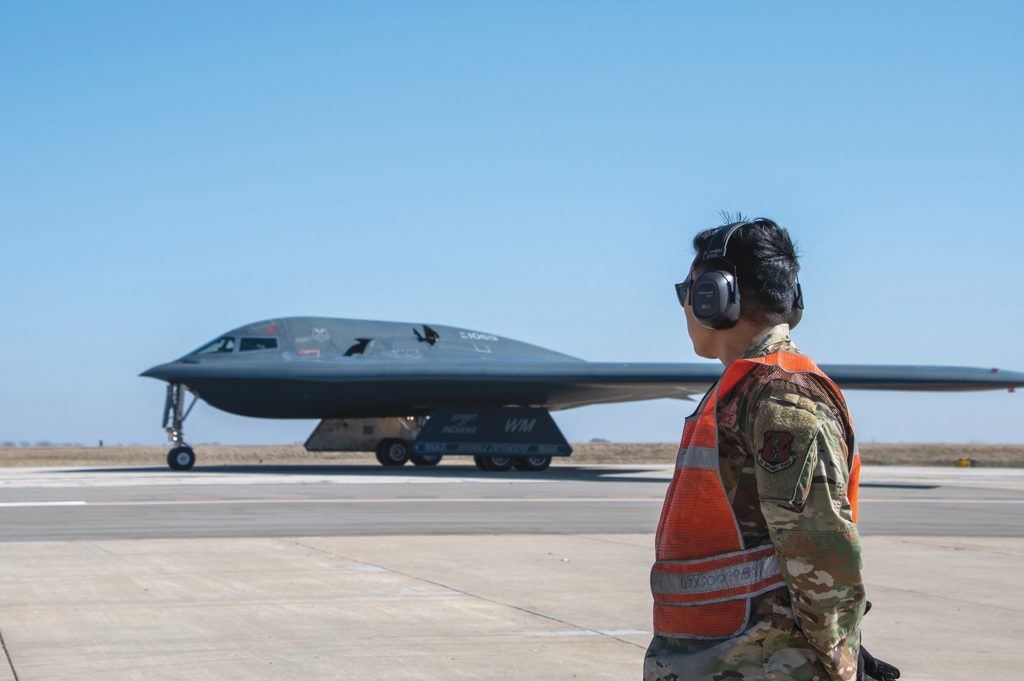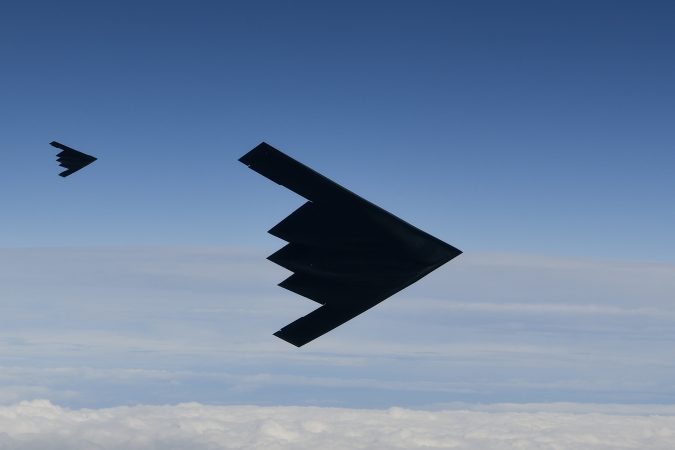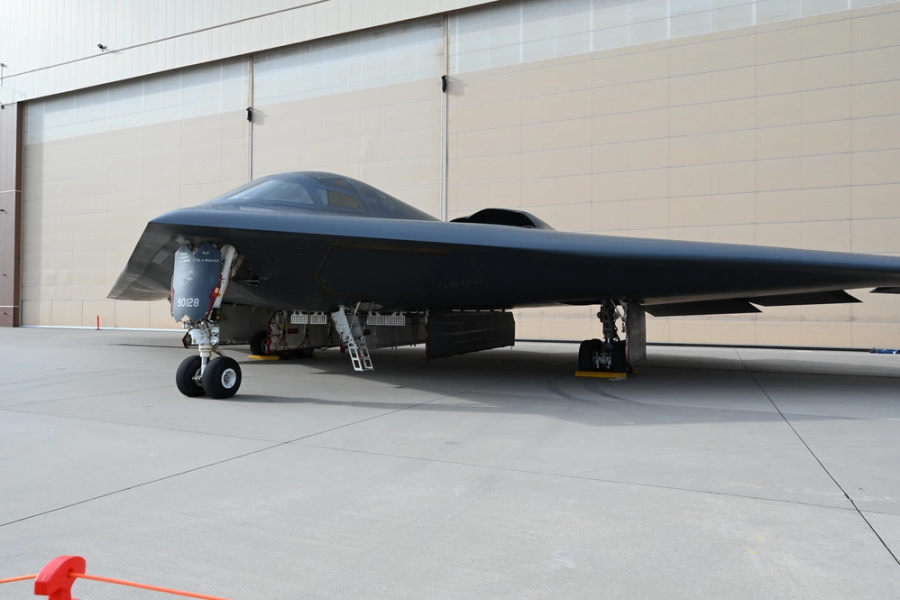Changes to the depot inspection and maintenance process for the B-2 Spirit stealth bomber resulted in one aircraft returning to service around three months ahead of schedule—a significant improvement for the B-2 fleet, which numbers just 19 jets.
The “Spirit of Nebraska,” tail number 89-0128, completed its programmed depot maintenance (PDM) at Palmdale, Calif., on Oct. 15 in 379 days, 91 days ahead of the usual 470 it takes for a B-2, according to an Oct. 21 press release from the Air Force Life Cycle Management Center.
PDM is a top-to-bottom inspection, overhaul, and repair process, usually done at a higher-level depot facility. All Air Force aircraft receive regular depot work, which becomes more important as the aircraft get older, explained Col. Francis Marino, B-2 System Program Manager within the Bombers Directorate at the Air Force Life Cycle Management Center.
“As any aircraft continues to age, you’re going to see more and more issues that need to be repaired on a PDM line,” Marino said in the release.

“Spirit of Nebraska” entered service in 1995, and the average age of the B-2 fleet is about 28 years old. The main objective of the B-2 PDM is to restore its low observable materials, which help reduce its footprint across the visual, electromagnetic, and acoustic spectrum.
“Many aspects of the low-observability process remain classified; however, the B-2’s composite materials, special coatings and flying-wing design all contribute to its ‘stealthiness,’” according to the Air Force.
With “Spirit of Nebraska,” the PDM team sped up the process by moving its fuel system inspection up on the schedule. In past PDMs, the inspection team might not flag a fuel leak until after some of the low observability restoration was complete, delaying the process by 45 days as they pulled off parts and materials to fix the leak and then reassemble the jet.
It also helped that the PDM team conducted pre-inspections of the jet before it arrived at Palmdale, which gave them a head-start spotting problems, ordering parts, and planning the repair schedule.
“The pre-inspection is great because it reduces the number of surprises at PDM,” Marino said.

That’s important because there are not many B-2s available: the fleet started with 21, but one was lost in 2008 after crashing at Andersen Air Force Base, Guam, and the Air Force decided it would be too expensive to fix another after it crashed at Whiteman Air Force Base, Mo., in 2022.
That leaves 19 B-2s, but not all 19 are available for combat at any given moment, retired Air Force Col. Mark A. Gunzinger, director of future concepts and capability assessments at The Mitchell Institute, wrote in a 2023 paper. At the time, only 16 of the 20 B-2s were available for combat after subtracting those in testing or maintenance, he wrote.
In a conflict with a nuclear power, some B-2s would likely be held back to deter nuclear attacks on the U.S. homeland, and the vast distances of the Indo-Pacific mean that any B-2s left over would spend a lot of time airborne and not be able to generate many sorties.
“In other words, DOD’s long-range, penetrating strike capacity in a conflict with China could consist of only six to eight B-2 sorties per day depending on B-2 basing, sortie durations, and the time needed to turn aircraft between sorties,” Gunzinger wrote. “The loss of a single B-2 in combat or due to a peacetime accident would equal the loss of at least 10 percent of this sortie potential. This is the definition of a fragile force.”
The next-generation stealth bomber, the B-21 Raider, is currently in flight test. Air Force officials have indicated they plan to buy 100 B-21s by the mid-2030s. The B-2 is notionally scheduled to start retiring in 2032, but until then, much responsibility rests on the shoulders of those who maintain it.
“Until the B-21 is fielded, the B-2 is the world’s only long-range penetrable strike bomber and the only aircraft that can do what we need it to do today,” Marino said. “As long as the aircraft is operational and our adversaries continue to come out with new and advanced weaponry across the electromagnetic spectrum, we’re going to have to continuously invest in the B-2s lethality, its survivability, and of course its readiness.”
